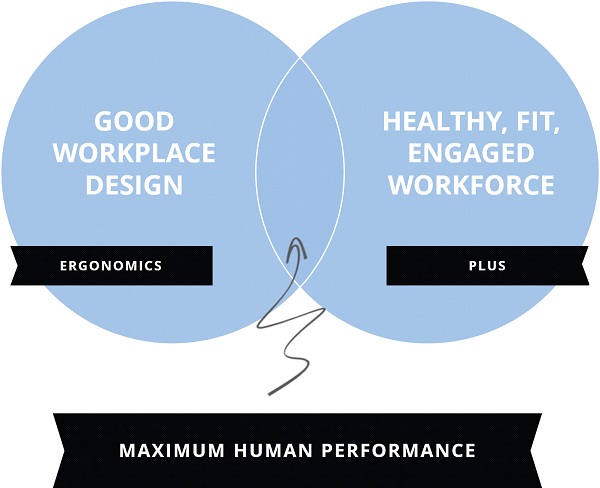Of course, the greatest mistake of all is to do nothing.
To wait until a person is sick or injured and treat them with surgery or prescription medications. This passive treatment philosophy is a failed model and a disservice to a company and its people.
It’s not that treating sick and injured people is evil or wrong. The medical community offers tremendous value to our society and we need these well-meaning people to continue to provide a necessary service.
But it doesn’t make sense to wait until people are sick or injured before we take action. In 2011, musculoskeletal injuries and disorders were the largest category of workplace injuries and accounted for 33% of injury/illness costs. This is preventable.
At Ergonomics Plus, we believe in a proactive approach. We believe prevention is better than treatment.
The Second Biggest MSD Prevention Mistake You Can Make
Recognizing the value of prevention, many smart and forward-thinking companies have created initiatives to proactively combat poor musculoskeletal health.
Unfortunately, many organizational initiatives aimed at improving musculoskeletal health are unorganized and inefficient. Many of these programs don’t achieve the desired MSD prevention results because they are operated independently of each other. While all of these programs have independant value, they’re best when implemented together in a comprehensive way.
The best results are achieved when all of the pieces of the MSD Prevention puzzle work together, instead of operating independently of each other. A comprehensive approach ensures that all MSD risk factors are addressed.
The Path to Prevention and Enhanced Human Performance
The path to improved health and human performance is a comprehensive and integrated process that specifically targets musculoskeletal health.
Maximum human performance is achieved at the intersection of good workplace design and a healthy, fit and engaged workforce.
An ergonomically efficient workstation with an unhealthy and unmotivated worker using poor work practices is not your goal. A healthy, motivated worker that is forced to work outside her body’s capabilities and limitations is not your goal.
Your goal has to be a well-designed and efficient workstation within the capabilities and limitations of a healthy, fit and engaged worker.
 Good Workplace Design
Good Workplace Design
The word “ergonomics” comes from the Greek word “ergon” which means work and “nomos” which means laws. It’s essentially the science of work. Good ergonomic design removes incompatibilities between the work and the worker and creates the optimal work environment. This allows you to efficiently create the best product possible.
Poor workplace design is not compatible with the worker and puts too much stress on the worker’s body. This leads to a fatigued, frustrated and hurting worker.
A systematic ergonomics improvement process removes these incompatibilities. This leads to less stress on the worker’s body, allowing them to focus on doing their job instead of on their fatigue and pain.
A Healthy, Fit and Engaged Worker
A systematic workplace ergonomics process will go a long way to prevent injuries and improve performance. But you can do much more than that, and you will have to if you want the best results.
What good is an ergonomically correct workstation if the worker doesn’t do their job properly? What if they use poor body mechanics? What if they ignore early signs and symptoms of declining musculoskeletal health? Or even worse, what if they don’t even know the early warning signs and the potential consequences?
These “what if” scenarios could go on all day. The point is that a well-trained and well-equipped workforce plays a huge role in your prevention and human performance efforts.
Like professional sports athletes, your industrial athletes need to be healthy and fit to perform their job. They need to be engaged with their work. They need to be empowered to perform their job well with education/training, early intervention and involvement in the ergonomics process.
In Conclusion
Don’t make the biggest mistake of all – to do nothing.
Second, beware the easy mistake of losing focus on musculoskeletal health and implementing programs targeting musculoskeletal health independently of each other. Your process needs to be comprehensive in nature and integrated for best results.
To achieve maximum human performance at your facility, you will need an effective ergonomics process and a strategy to improve employee health, fitness and engagement.
Think prevention!

 Good Workplace Design
Good Workplace Design